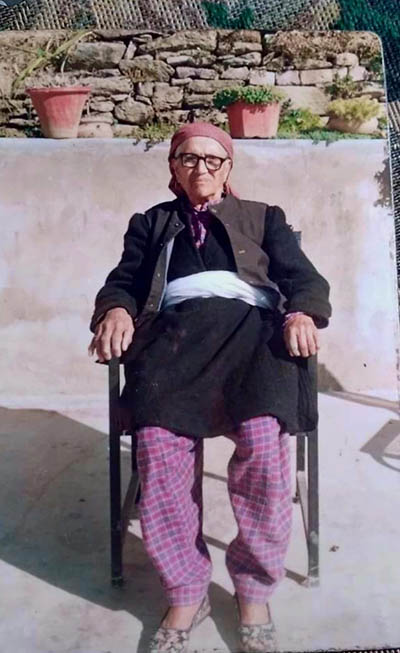SHIMLA- There was a time when the cherished waistwear called Gachi, a unique garment used to hold a special place in the hearts of Pahari women. Gachi imparting not just beauty, but also a multitude of practical benefits to women in the hills of Himachal.
Today, among the Pahari community, it is the wise, elderly women who most often don the Gachi that stand out in the crowd.
The Gachi-wearers understand the importance of protecting their spines and lower vertebras from the unexpected jolts and strains that can occur during their daily household tasks.
The women secure tying the Gachi over their stomachs, particularly the navel. By doing so, they create a “shield of support that shields their precious spines from harm or jerks”.
But Gachi's role doesn't end there. It becomes a binding force, quite literally. Gachi wraps around the body, strengthening the connection between the wearer and their clothing.
This added support brings relief from the weariness that can accompany long hours of work, providing a renewed sense of vigor and vitality to the wearers.Grac
The visual appeal of Gachi cannot be overlooked. It adorns traditional attire with a touch of elegance and grace.
The vibrant colors and intricate designs enhance the overall beauty of the wearer, showcasing the rich cultural heritage of the Pahari people.
In the realm of childbirth, Gachi takes on a new significance. Elderly women, adorned with wisdom and experience, lovingly advise young brides to wear Gachi during the precious moment of giving birth.
The purpose behind this guidance is to ensure that the belly remains in good stead, free from the unwelcome development of bulges and paunches. The Gachi acts as a gentle but firm reminder to keep the body in shape, even after the joyful arrival of a new life.
Venturing beyond the village confines, even migratory shepherds acknowledge the invaluable worth of Gachi. As they embark on their journey to higher pastures, guiding their flocks with care, they too find solace in the protective embrace of Gachi. Whether used as a belt made of sturdy ropes or a warm woollen scarf, it shields their backs and spines from potential harm.
Additionally, the resourceful shepherds utilize Gachi for various other purposes along their arduous path, such as carrying bundles of fuelwood or securely fastening belongings as they traverse rugged terrains.
Gachi's versatility extends beyond its physical benefits. It becomes a trusted companion for the elderly women, serving as a hidden treasure chest. Nestled within its folds, one may find carefully concealed currency notes or precious ornaments, safeguarded from prying eyes and wandering hands.
Dadi, Nani, or Bua, the revered figures of the family, entrust Gachi with their most valuable possessions, knowing that it will keep them safe and close.
But Gachi seems to have sung a swan song among the young women whether married or not.
However, amidst the changing times and evolving fashion trends, Gachi has gradually transitioned into a fancy attire reserved for special occasions.
Its traditional significance and everyday practicality have somewhat diminished, as the younger generation embraces modern styles and convenience.




